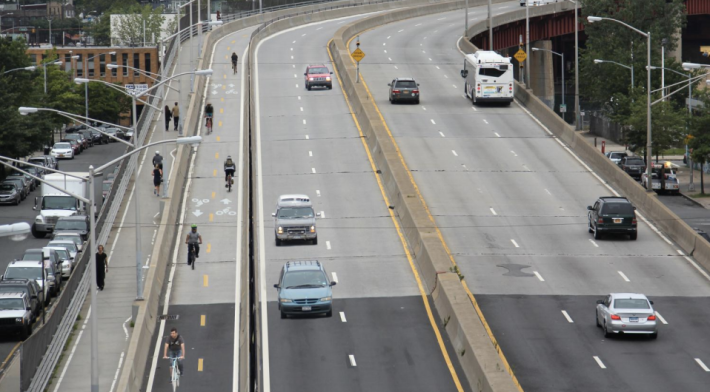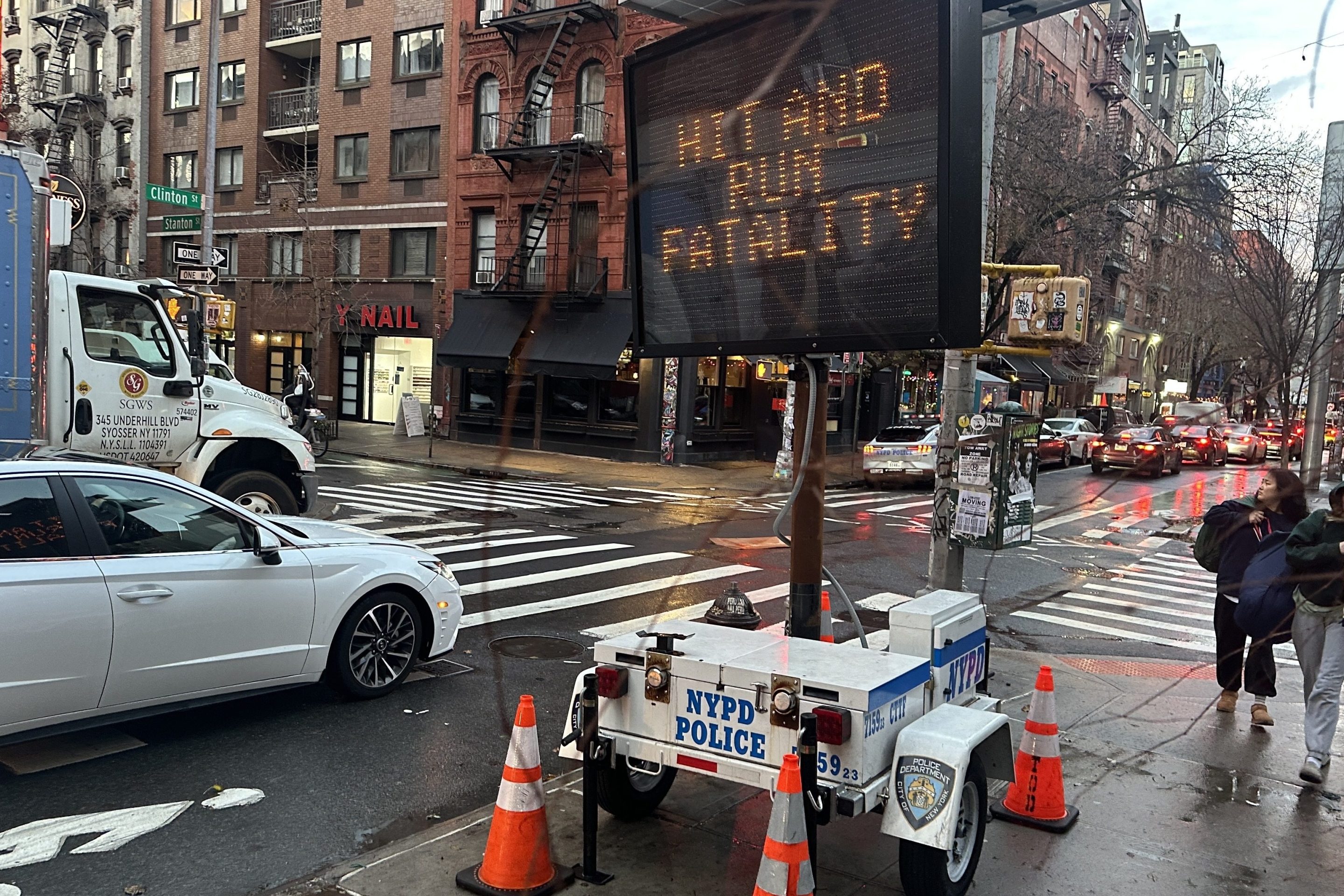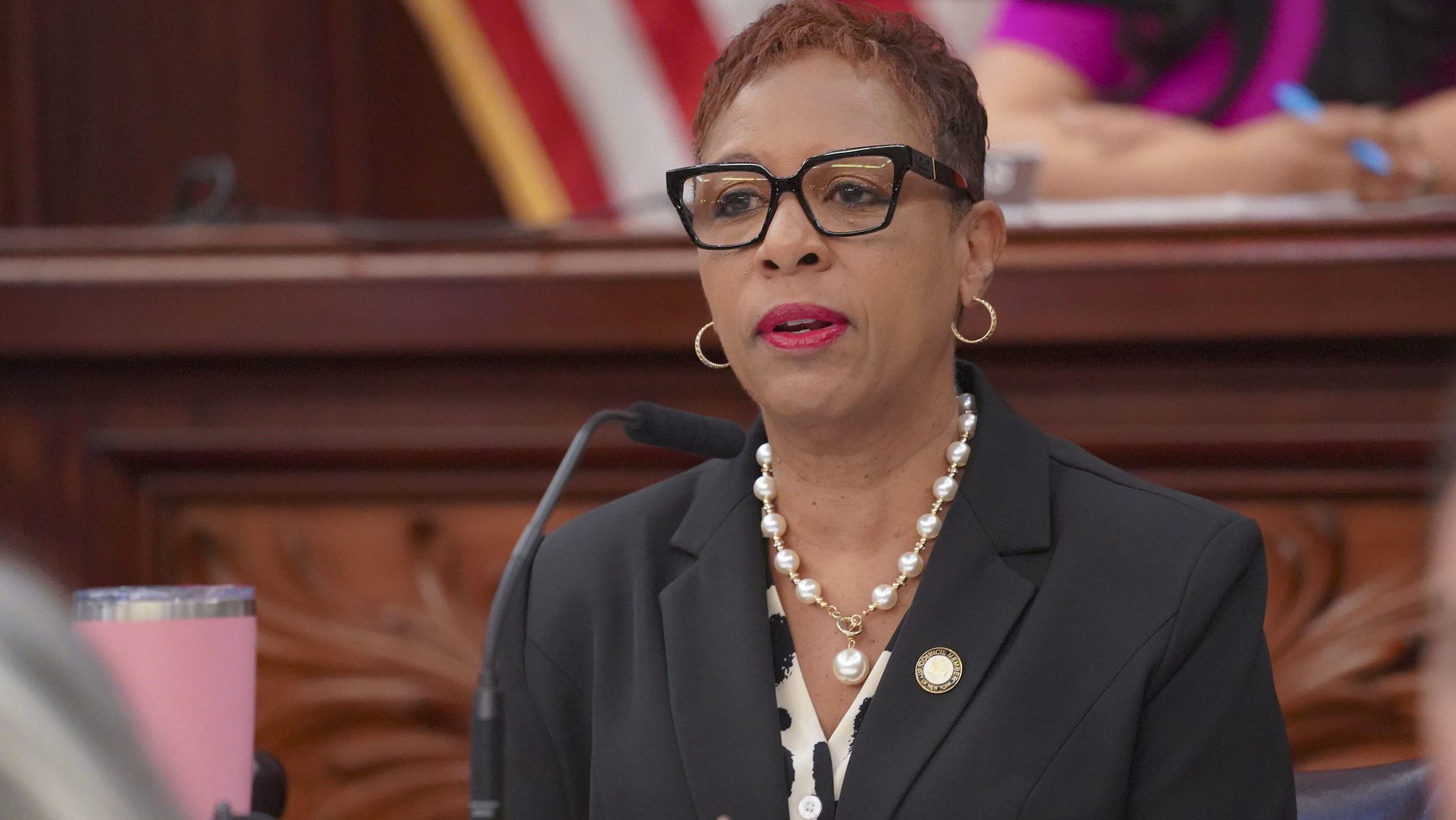
Construction delays will push completion of the Pulaski Bridge protected bike lane to 2016, says DOT, the second setback for the project. Until the dedicated bikeway is built, the bridge's narrow walking and biking path will only get more cramped as Citi Bike debuts in the neighborhoods on both sides of the bridge.
The bike path would calm traffic and relieve an uncomfortable bottleneck for people biking and walking between Greenpoint and Long Island City. The project was initially set to wrap up in 2014, then red tape delayed it until the end of this year. Citing issues with drainage design, DOT now says it is scheduled to be complete next April.
The Pulaski is a drawbridge, making the addition of physical barriers a greater engineering challenge. The drawbridge section will receive steel rail barriers, while barriers on the approach spans will be concrete. The concrete barriers are currently being fabricated off-site, DOT said.
DOT had begun initial work on the project this spring and planned on installing the barriers this year, but the agency is holding off to ensure its design will properly drain the bridge deck during rainfall.
Assembly Member Joe Lentol has been pushing DOT for the Pulaski bikeway since 2012. At yesterday's Citi Bike ribbon-cutting in Long Island City, Lentol needled Transportation Commissioner Polly Trottenberg about the bridge, a vital link within Citi Bike's expansion zone.
"What better way is there than to travel over a new dedicated bike lane that we're getting soon -- aren't we, Polly? -- on the Pulaski Bridge," he said. "Right?"
"Yes, yes," Trottenberg replied. "Springtime."
The long wait for the Pulaski project points to the importance of DOT's "operational" safety projects, which employ low-cost materials and skirt the city's construction bureaucracy.
The Pulaski bikeway is a complex engineering feat that makes sense as a capital project, but not all street safety projects have to be cast in concrete. When street redesigns begin as capital projects, with no interim phase made out of temporary materials, years tend to pass before the public sees any payoff. Construction of the Sands Street bike path didn't start until three years after it was supposed to. Similar delays plagued the build-out of concrete curb extensions for the Downtown Brooklyn Traffic Calming Project.
DOT has had great success circumventing the morass of capital construction by implementing safety projects with paint, planters, and some well-placed concrete islands. This type of rapid implementation is the key to quickly reducing traffic injuries and deaths citywide, as called for in the city's Vision Zero goals. But when advocates called on the de Blasio administration to increase its commitment to these projects in the last round of budget negotiations, City Hall didn't budge.
Additional reporting by Ben Fried





